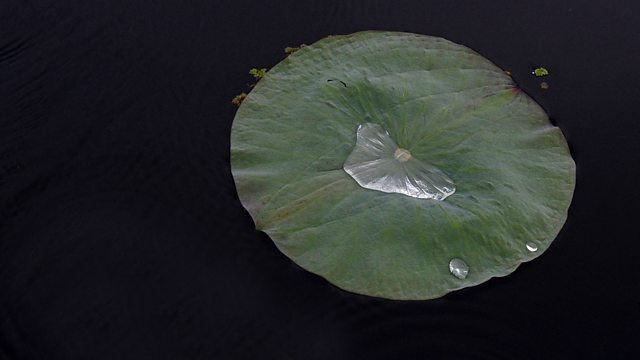Self-cleaning Materials
Self-cleaning clothes and surfaces, Cheap and easy tests for glaucoma, Urine-powered lighting
Self-cleaning Cashmere
Researchers at City University in Hong Kong wanted to really test themselves, when coming up with a self-cleaning treatment for fabrics. So they chose one of the most delicate, expensive materials – cashmere. They coated the fluffy, soft wool with a mixture of chemicals, which when exposed to UV light, help to shrug of dirt and strains.
Self-cleaning Paint
Taking inspiration from the large-leaved lotus plant, which always seems to keep its leaves pristine, scientists have come up with a self-cleaning paint-like coating. By chemically copying the lotus' micro-rough, waxy surface, the University College London team of chemists have produced a 'superhydrophobic' treatment. The extremely water-repellent coating means water droplets do not soak in, but stay spherical and roll around picking up, and removing, dirt and dust. And because they have used two different-sized nano-molecules to create the rough texture, they have found that oil contamination does not spoil the self-cleaning properties. This could make it an ideal surface treatment for bearings and gears, which need to be kept clean, but also need to be lubricated with oil.
Glaucoma Test
Glaucoma is the second leading cause of blindness worldwide. It is caused by damage to the eye's light-detecting retina when there is a build-up of fluid inside the eyeball. Sight loss is often preventable if it is detected early. However, the early stages of the disease are often asymptomatic and overlooked. Currently, tests for glaucoma require very detailed images of the retina. The equipment for this can be very expensive and not very portable. But Dr Stephen Gruppetta at City University in London has come up with a prototype testing device, which should be cheap and easy to use and portable. The Structured Illumination Ophthalmoscope - can obtain a high resolution 3D image of the retina at the back of the eye using a simple and inexpensive optical set up.
Urine-powered Lighting
A prototype toilet has been launched on a UK university campus to prove that urine can generate electricity, and show its potential for helping to light cubicles in international refugee camps. The technology, fitted to the base of a portable toilet, uses microbes which feed on urine for their own growth and maintenance. The system taps a portion of that biochemical energy used for microbial growth, and converts that directly into electricity, which can be used to power LED lights.
(Photo: Drops of water nestle on a lotus leaf © Tauseef Mustafa/AFP/Getty Images)
Last on
More episodes
Previous
Chapters
-
Self-cleaning Cashmere
A self-cleaning coating for delicate cashmere using solar-power chemistry
Duration: 06:13
Self-cleaning Paint
Superhydrophobic, self-cleaning surfaces that do not get spoiled by oil
Duration: 07:22
Glaucoma Test
Cheap and easy tests for glaucoma
Duration: 05:59
Urine-powered Lighting
Harnessing the power of urine to provide emergency lighting in refugee camps
Duration: 05:28
Broadcasts
- Thu 5 Mar 2015 19:32GMT����ý World Service Online
- Fri 6 Mar 2015 00:32GMT����ý World Service Online
- Fri 6 Mar 2015 04:32GMT����ý World Service Online
- Fri 6 Mar 2015 13:32GMT����ý World Service Online
Podcast
-
![]()
Science In Action
The ����ý brings you all the week's science news.


